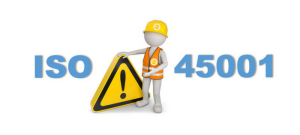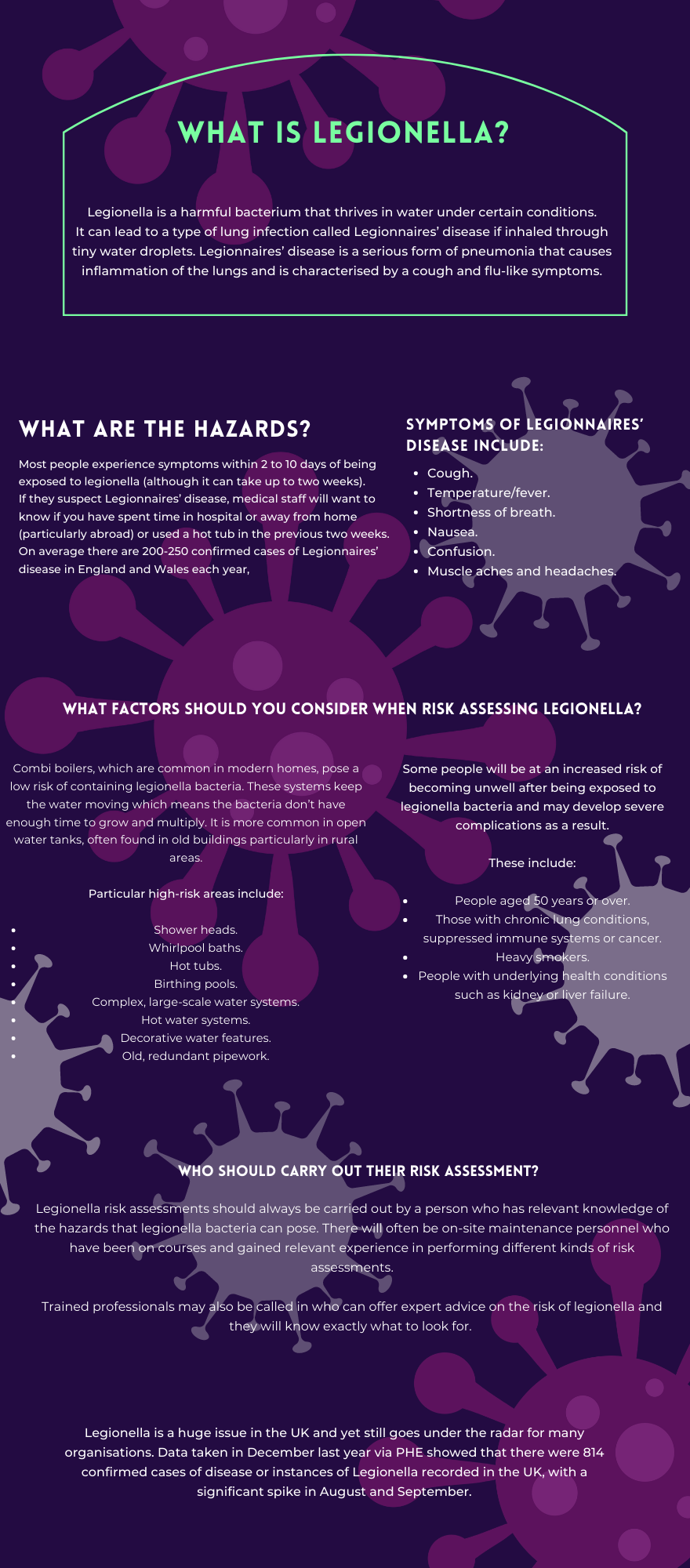The HSE have recently highlighted how workplace noise could be contributing to stress levels in employees working in the hospitality industry. Businesses in this industry are being urged by the HSE to reassess noise levels as they fear this could be contributing to workplace stress. This comes after a recent survey which exposed restaurants in London as having the highest workplace noise levels in Europe.
According to a recent article, over half of the restaurants tested had noise levels over 76 decibels, which is around the same loudness as a lawn mower. And as if that wasn’t bad enough, the noise levels during peak times often exceeded 80dBA.
Workplace noise is regulated by the HSE and the ‘Control of Noise at Work Regulations 2005’. This states that employers must assess risk to employee health when noise reaches a level of 80dBA. At these noise levels, information and training should be provided to staff. However, if these noise levels reach 85dBA, employers are legally required to provide hearing protection and specialist hearing protection zones.
The HSE is now working alongside ‘The Burnt chef Project’ to raise awareness of the signs of stress within hospitality workers. This looks to specifically address when noise levels reach a dangerous level so that employers can respond to and reduce any risk to workplace health.
Adding to unsociable hours and tough working conditions, the hospitality sector needs to now be aware that they face legal obligations to protect their employees from noise. A combination of these conditions could lead to rising levels of stress and employee burnout.
The HSE remains committed to looking after employee mental health and wellbeing as much as physical health and safety, commenting that “We need to make looking after our mental health just as routine as managing safety at work. The first thing for employers to be aware of is that the law requires employers to assess the potential risk from work related stress and act on it.” (cite)
As part of our range of occupational hygiene services, we regularly visit our customers’ sites to measure workplace and environmental noise. From an overall perspective, workplace noise can contribute to many health problems that can make working hazardous. Employers have a legal duty to ensure their employees have a safe working environment to both reduce worker health problems, and also to protect their business.
Many businesses fall into the trap of thinking that something will never happen on their premises. However, last year alone the HSE has fined UK businesses £26.9 million (cite) for breaches of health and safety.
Businesses in the hospitality industry that haven’t yet had a workplace noise assessment, really need to be planning for one ASAP.
Contact us to book a call to discuss your workplace noise requirements.
Guest blog Safety First Group Ltd
 What is ISO 45001 and why should my business get certified?
What is ISO 45001 and why should my business get certified?
The importance of health and safety in the workplace can never be underestimated. As well as being written into law, ensuring staff aren’t at risk of injury or illness is also an integral part of being a responsible employer.
Maybe one of the biggest drivers for employers to take workplace health and safety seriously is that it allows you to show your customers and employees that you are committed to a safer workplace. This is one of the many reasons why organisations invest in ISO 45001 certification, the internationally recognised Occupational Health and Safety (OH&S) Management System Standard, which sets out the requirements for an organisation to ensure a safe and healthy workplace and to prevent work-related accidents and illnesses.
ISO 45001 is a framework that helps businesses to raise the awareness of health and safety risks among their employees as well as create controls that help them to mitigate or remove these risks from the workplace. By doing so, employers can help to keep their staff happy, healthy and safe, reducing the likelihood of absenteeism, injury, mental ill health and breaches of legislation. Not only can this reduce staff turnover, but it can raise your business’ reputation in the marketplace and benefit your bottom line.”
Why should I get my business ISO 45001 certified?
ISO 45001 certification is a fantastic way of presenting your organisation’s commitment to providing a workplace in which the risk of illness and injury to your workers, community or clients is minimised.
Achieving this accreditation in order to make your organisation a safer place to work is also a fantastic way to boost productivity by reducing the number of disruptive incidents. It can also help to boost your workforce’s morale.
The benefits in seven key points:
The certification can be achieved by businesses of any size and it is suitable for all organisations that are looking to improve risk management, protect their reputation and drive productivity at work.
How have ISO certifications helped organisations during the COVID-19 pandemic?
COVID-19 has certainly been a testing time for businesses, especially when it comes to keeping their workforce safe and healthy. But ISO 45001 has certainly supported businesses throughout the crisis.
“A robust framework of health and safety processes has meant that businesses with ISO 45001 have had the procedures in place to quickly assess the new risk and its implications for the health and safety of their staff, as well as the means to communicate these risks and what the business planned to do to control them”
How can I gain ISO 45001 certification? What are the requirements?
Gaining ISO 45001 certification is a straightforward process, but it does require you to have some things in place before you start. You also need to be willing to change certain processes if required to gain certification.
For example, you need to determine the internal and external factors that affect your business, communicate roles and responsibilities clearly and adapt/react to changes. Other key actions include:
What’s the most effective way of getting certified?
The most straightforward way to gain ISO certification is through the use of an experienced external party that can assist you in creating, implementing and certifying your ISO 45001 management system. This will help to ensure your organisation has adopted the right processes from the beginning in order to achieve certification quickly.
Contact us to discuss your health and safety requirements, or to make an appointment to discuss 45001.
If you’re found to be in material breach of Health and Safety law, you will have to pay for the time it takes the inspector to identify the breach and subsequently advise what you need to do to put things right. This includes investigating the issues themselves and taking any enforcement actions.
There are several key areas we’ve discovered are becoming more popular for the HSE to focus on. So, in addition to making sure your risk assessments are in place and up to date, here are some of the most common ones, and the most important checks you can make to make sure that you’re covered should an inspector turn up at your door.
CoSHH and occupational hygiene
Have appropriate COSHH assessments been completed for substances in use in your business?
If you’re welding, do you know the makeup of the fume and required control measures?
If welding is undertaken, can the fume be controlled at source via the use of on-tool extraction? Is Local Exhaust Ventilation a suitable alternative?
If you use metalworking fluids, have you assessed the risks to workers of long term exposure and inhalation? Do you have bacterial testing measures in place with records kept?
Has appropriate training, instruction and supervision been given to employees about hazardous substances within the workplace (consider cutting fluid, wood dust and welding fume) themselves? Have you communicated the risk / CoSHH assessment findings?
Has air/exposure monitoring been undertaken and recorded to ascertain suitable controls are in place?
Is Respiratory Protective Equipment required, if so what type?
Is a minimum assigned protection factor required?
Has face-fit testing been completed? (using a Fit2Fit accredited tester)
Has a DSEAR assessment been undertaken if required?
Can the dangerous substances identified be substituted for a less hazardous alternative, the quantity reduced, or the work process changed to reduce the risk?
Are measures in place to reduce employees exposed to effects of dangerous substance?
Do drivers have required training and licensing to drive the vehicle?
Is an appropriate evacuation and emergency procedure in place?
Noise and vibration
Have noise risk assessments been undertaken for the workplace and hearing protection zones / control measures implemented?
Have Hand Arm Vibration (HAV) and Whole Body Vibration (WBV) assessments been undertaken for the workplace and control measures implemented?
Is health surveillance in place where required for: Hazardous Substances, Noise and Vibration?
Machine maintenance and guarding
Has the task been risk assessed and a safe system of work developed?
Are all respective guards or interlocks in place? Have you inspected these prior to use?
Has the operational manual been reviewed to consider requirements for maintenance?
Have the operators and engineers been appropriately trained in process and maintenance requirements?
Is there a lock-out, tag-out procedure in place?
Prior to starting the work has the machinery been purged of any stored energy or hazardous substances?
Workplace transport
Has an appropriate risk assessment been completed that considers transport?
Has this considered blind spots? Bends? Pedestrian interactions? Gradients?
Is the site large enough for activities required? Loading/unloading, reversing etc.
Are vehicle routes wide enough for the types of vehicle needed?
Do drivers have required training and licensing to drive the vehicle?
Has a one way or traffic management system been implemented? What are the pedestrian segregation controls?
Working at height
Is a suitable and sufficient Risk Assessment in place?
Has it been completed by a competent person with involvement of the employees undertaking the work?
Has it been communicated to relevant parties? (i.e. those completing the work and those who may be affected by hazards arising from the work.)
Is the work at height planned, organised and carried out by competent persons?
Are ladders being used? Are they the correct type? Have they been inspected before the task is carried out?
Has adverse weather been considered if working outside?
Is access equipment being used? If so, what is the maintenance schedule? Is it the right equipment? Has it had its LOLER examination?
Is a work-restraint system in place? Is it suitable to prevent employees from accessing the edge/an area where they could fall?
Contact us if you require further information.
A legionella assessment is an essential risk management process. It comprises a detailed examination of the risks presented by man-made water systems, and seeks to identify and assess the risks associated with Legionnaires’ disease through exposure to the bacteria.
We have put together an infographic. I would recommend that you share the information with employees as it could be beneficial to them.
Contact us for further information.


Importance of Updated Safety in the Workplace
Safety in the workplace is essential. Part of safety protocol entails inspecting and replacing any damaged equipment. Personal protective equipment (PPE) applies to any industry. It’s helpful to know what PPE your team should wear as well as the stationary equipment available to keep everyone safe.
Why Is it Important to Inspect for Damage and Replace Equipment?
There are several factors to consider when inspecting damaged equipment and replacing it. Dangerous and risky job sites require that personal protective equipment, like helmets, must always be worn to avoid fatal accidents such as falling objects. All PPE must be working correctly and replaced regularly.
Inspect and Replace PPE in a Timely Manner.
Identify the correct time to replace PPE. Replacing equipment too early is a waste of resources to pay for new equipment. However, waiting too long to replace PPE is risky because, if equipment fails, accidents and injuries happen.
Develop Standards and Protocols for Inspecting PPE.
Establish inspection timelines, standards and protocols. For example, everyone could be responsible for their personal protective equipment, or one or two people could be assigned responsibility for inspecting the equipment. If and when there is an issue with the equipment, it should immediately be taken out of circulation and replaced. Therefore, you should always have extra PPE on hand.
When creating inspection protocols, you need to be aware of what to look for when inspecting PPE. Some examples of what to inspect include:
Use a PPE Grading System.
Create a PPE grading system. A grading system should be common to everyone and helps your employees instantly know when equipment should be replaced. PPE may need to be replaced while it’s getting fixed or may need to be thrown out altogether. It all depends on the type of job.
Use Occupational Safety and Health Administration Guidelines.
Refer to The Health and Safety Executive (HSE) and Government guidelines. Be sure that your team knows exactly what the guidelines are and be sure they are met at all times. These guidelines can be included in your inspection and replacement requirements.
COVID and PPE
When managing the risk of COVID-19, additional PPE beyond what you usually wear may not be beneficial. This is because COVID-19 is a different type of risk to the risks you normally face in a workplace, and needs to be managed through social distancing, hygiene and fixed teams or partnering, not through the use of PPE.
The UK Government has published COVID-19 Secure working safely guidance for workplaces that provides a hierarchy of risk control measures that employers and the self-employed are expected to follow when reviewing their risk assessments for COVID-19 hazards.
When an Incident Occurs, Take Action Immediately.
Take action after an incident. Any affected PPE should always be replaced. Depending on the incident, it may be possible to save the gear after being inspected. Otherwise, it should be replaced.
Don’t Forget About Stationary Equipment
Be aware of stationary equipment like machinery and the need to stand behind a protective shield. This equipment also requires you to inspect, repair, and/or replace the stationary equipment as well.
Be Consistent.
Though replacing and inspecting equipment may seem like a hassle, it is better to be safe than sorry. Make sure your workers are aware of necessary PPE and inspect their gear at the beginning of a shift or before starting a major project. You do not want to risk an accident.
What PPE Wear Is Available?
PPE wear includes head protection, eye protection, hearing protection, good respiratory protection, correct gloves, footwear, and correct work clothing.
Here are examples of the different types of PPE wear available.
Head Protection
Invest in a good helmet. Today, there are many customised features to choose from such as adjustable interior harnesses and sweatbands. Ensure PPE is compatible, for example, wearing a safety hat in conjunction with ear defenders.
Eye Protection
Work-related eye injuries unfortunately happen to hundreds of people daily worldwide. Safety glasses can prevent these injuries. Welding goggles and shields can protect you from bright light or infrared radiation.
Hearing Protection
In a high sound level environment, earplugs would be comfortable. However, ear defenders may be a better choice to have on the shop floor or construction site because you can take them on and off easily and they’re more hygienic.
Respiratory Protection
Masks are necessary when coming in contact with hazardous materials like vapour, smoke, or powder. Dust masks protect you against fine dust and other dangerous particles. Full-face masks protect you against toxic materials. These masks will protect your nose and mouth from pollution.
Hand Protection
There are different types of gloves depending on your occupation.
Protective Footwear
Different types of protective footwear serve different purposes
Correct Work Clothing
Specific types of work clothing can protect against accidents in a crowded workshop. High-visibility vests or jackets can keep you visible in dark or crowded conditions. Pants made with strong fabric will protect your skin and resist wear and tear.
Ensure the team are trained and competent to carry out their tasks.
Safety in every workplace is a must to provide a safe work environment, and keep you and your team safe.
Contact us for further information.